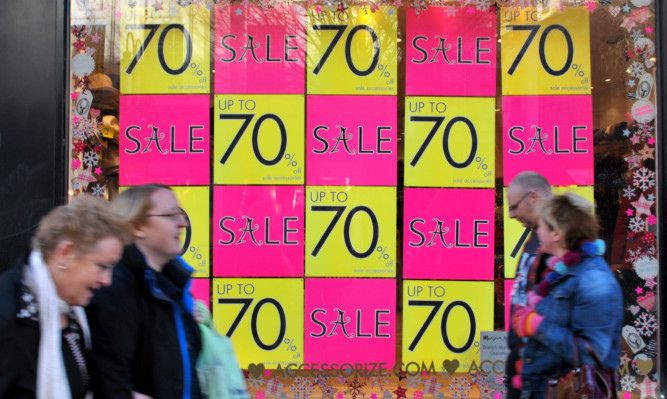Shop-price inflation fell to its lowest level for more than three years last month, as people chose to make do with old clothes rather than splash out on new outfits.
Data from the British Retail Consortium showed weak demand for clothing in the January sales period, leading to cheaper prices on the high street, while there were also deeper discounts in the competitive electricals market.
While the price of food was up 4% on the same period last year, the cost of non-food items fell back by 1.4%.
Overall average retail prices rose 0.6%.
The comparative measure of inflation at the till has not been so low in since November 2009, when it was 0.2%.
The statistics also mark a 0.6% decrease in January’s prices when compared to the previous month.
BRC director-general Helen Dickinson said promotions had not been as widespread this January as a year ago but, where they were applied, mark-downs had been deeper.
In general, retailers had been expected to be better prepared for lower demand than they were 12 months ago and were reported to be carrying less stock.
The price of clothing fell by the largest proportion on record, but clothing sales still failed to respond.
“The significant year-on-year fall in non-food prices was driven by cheaper clothing and electricals,” Ms Dickinson said.
“Offers are common at this time of year, as retailers clear stock to make way for spring and summer ranges, but we’ve not seen non-food fall this quickly since September 2009.
“Weak demand for clothing necessitated big price cuts. Clothing prices were down 7.7% on the year before, their biggest drop in the six years of this survey.”
She said easing pressure on commodities had filtered through to shoppers and lessened the rate of food inflation, which was down by a tenth of a percentage point on the rate recorded last month.
While there remains the potential for “volatility” in the system and shocks in the supply chain, the BRC expects the rate of inflation to remain stable for the remainder of the year.
Mike Watkins, from research partner Nielsen, said regular price cuts had impacted on the traditional retail year.
“With the traditional high street January sales being replaced by year-round discounting, it’s no surprise to see a continuation of deflation in non-food, particularly in clothing and footwear where half-price reductions have been used to attract shoppers post-Christmas.”
He said: “For food retailers, despite seasonal promotions coming to an end, food inflation has remained steady at around 4%.
“This is perhaps a positive sign that the industry is managing the impact of any cost inflation coming through the supply chain.”
